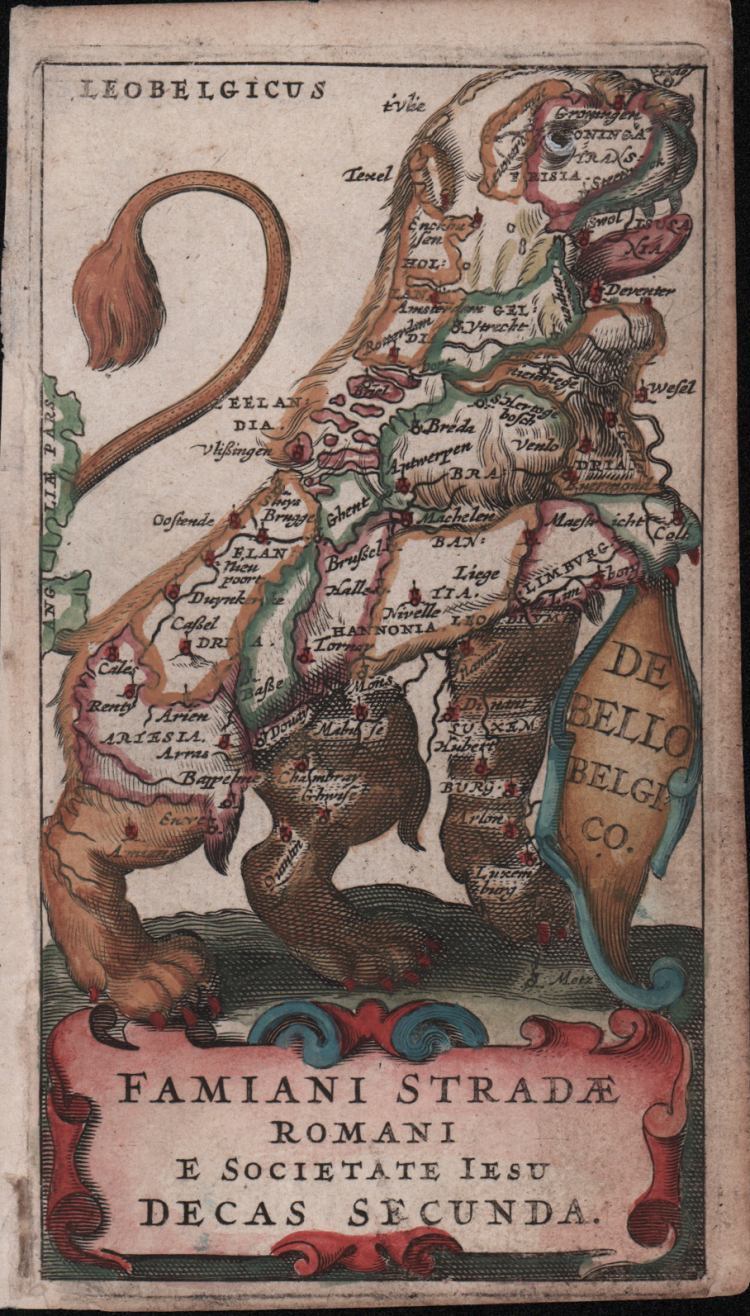- New




| Reference: | A49225 |
| Author | Famiano STRADA |
| Year: | 1648 |
| Zone: | Leo Belgicus |
| Printed: | Rome |
| Measures: | 70 x 125 mm |



| Reference: | A49225 |
| Author | Famiano STRADA |
| Year: | 1648 |
| Zone: | Leo Belgicus |
| Printed: | Rome |
| Measures: | 70 x 125 mm |
Allegorical representation of the Netherlands in the form of a lion. The representation of the Belgian Lion (Leo Belgicus) was a popular form of allegorical cartography used in the 16th and 17th centuries to symbolize the strength and unity of the provinces of the Netherlands.
Below the map, the words “FAMIANI STRADA ROMANI E SOCIETATE IESU DECAS SECUNDA” indicate that the map comes from De Bello Belgico, a work by Famiano Strada, printed in Rome by Francesco Corbelletti and in Amsterdam by Johannes Janssonius in 1648.
This version of the Leo Belgicus is based on the original form by Michael von Aitzing (1583), with the lion standing facing right with its right paw raised and a shield in its hand. It is one of the smallest versions of all the Leo. The frontispiece appears in the popular history that describes the war between the Netherlands and Spain from a pro-Spanish and pro-Catholic point of view. Famiamo Strada was a Jesuit and teacher at the Roman College in Rome.
Etching with magnificent hand coloring, in perfect condition.
Bibliografia
Van der Heijden (1998) n. 498; Van der Heijden (2006), pp. 65-66; H. Spikmans, Germania Inferior, p. 421, n. 104.
Famiano STRADA (Roma, 1572 – Roma, 1649)
|
Famiano Strada (Rome, 1572 - Rome, 1649) was a Jesuit priest, historian and literary Italian. Teacher of rhetoric in the Roman College, was one of the main celebrants of the roman rhetoric of '600, inspired by the Baroque style of the concepts and metaphors.
|
Famiano STRADA (Roma, 1572 – Roma, 1649)
|
Famiano Strada (Rome, 1572 - Rome, 1649) was a Jesuit priest, historian and literary Italian. Teacher of rhetoric in the Roman College, was one of the main celebrants of the roman rhetoric of '600, inspired by the Baroque style of the concepts and metaphors.
|